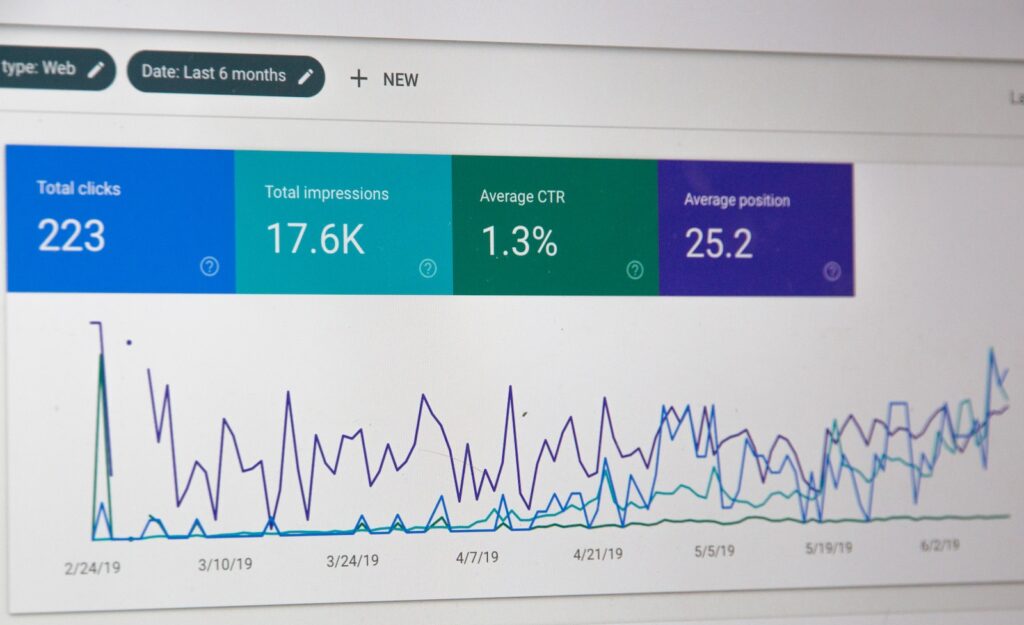Did you know that over 2.14 billion people buy things online?
That’s a huge number!
So, if you want to take advantage of the popularity of online shopping and make some money for your business, it’s a smart move to develop an ecommerce website.
There are already about 12 million to 24 million ecommerce websites out there, so it’s important to make sure your site stands out from the competition.
That’s where ecommerce web development comes in.
This is the process of creating and improving your website to ensure that it is user-friendly, visually appealing, and functional.
Also at the same time, developing an ecommerce website can be a complex process.
But with the right strategy and execution, it can become a valuable asset for your business.
In this post, we’ll talk about different essential aspects of ecommerce web development.
This is to ensure that you understand the concept and the next time you’re out there looking for a reliable ecommerce website development company, you can do so easily.
Let’s get started.
What Is Ecommerce Web Development & Why Is It Important?

Ecommerce web development refers to the process of creating online stores and digital platforms where businesses can sell products or services to customers over the internet.
It involves UI UX designing, building, and optimizing websites that enable smooth and secure online transactions.
Ecommerce websites provide a virtual marketplace where customers can browse, select, purchase, and even receive products right at their doorsteps, all without leaving the comfort of their homes.
The importance of ecommerce web development stems from the significant shift in consumer behaviour towards online shopping and the increasing reliance on digital platforms for commercial transactions.
Here are some key reasons why ecommerce web development service is crucial:
1. Global Reach
Ecommerce websites break down geographical barriers.
Businesses can reach customers from different parts of the world, expanding their customer base beyond local limitations. This opens up new growth opportunities and markets.
2. Convenience
Online shopping offers unparalleled convenience. Customers can browse and shop at any time, from anywhere, using various devices.
This 24/7 accessibility enhances customer satisfaction and drives sales.
3. Cost-Effectiveness
Compared to setting up and maintaining physical stores, ecommerce platforms generally have lower operational costs.
There’s no need for extensive real estate, utilities, or staffing.
This makes it more feasible for small businesses and startups to enter the market.
4. Personalization
Ecommerce websites can gather customer data and insights, allowing businesses to personalize recommendations, offers, and shopping experiences.
Personalization enhances customer engagement and loyalty.
5. Diverse Payment Options
Ecommerce sites offer a variety of secure payment options, including credit/debit cards, digital wallets, and online banking.
This flexibility improves the customer experience and encourages conversion.
6. Efficient Inventory Management
Ecommerce platforms often integrate with inventory management systems.
This automation helps businesses keep track of stock levels, manage product availability, and avoid overselling.
7. Analytics and Insights

Ecommerce websites provide valuable data about customer behaviour, preferences, and purchasing patterns.
These insights enable businesses to make informed decisions, refine marketing strategies, and optimize the user experience.
Did you know that 90% of users are inclined to persist in shopping due to a superior user experience?
8. Scalability
As businesses grow, ecommerce websites can easily scale to accommodate increased traffic, products, and transactions.
This flexibility ensures a seamless customer experience during peak periods.
9. Reduced Marketing Costs
Online marketing and digital advertising can be more cost-effective than traditional methods.
Businesses can target specific demographics and measure the success of their campaigns in real-time.
10. Competitive Advantage
In today’s digital landscape, having a strong online presence is essential to staying competitive.
A well-designed ecommerce website can set a business apart and attract a loyal customer base.
11. Customer Reviews and Rating

Ecommerce platforms often allow customers to leave reviews and ratings for products. Positive reviews build trust and credibility, influencing potential buyers.
12. Accessibility for Diverse Audiences
Ecommerce websites can be designed with accessibility features to accommodate users with disabilities, making shopping more inclusive.
In essence, ecommerce web development service empowers businesses to tap into the vast potential of online markets, increase revenue, improve customer experiences, and adapt to the evolving landscape of commerce.
Sticking With an Ecommerce Web Development Checklist
Curious about how to make your website a cash magnet?
Check out this super helpful ecommerce website development checklist that’s all about raking in those leads and sales:
1. User Experience, Anyone?

Okay, so making your site user-friendly is like rule number one.
When your website is a breeze to use, customers love you.
And you don’t want to miss out on that, especially since about 89% of people bounce to competitors after a bad experience.
Here’s the deal for a killer user experience:
- Shout out about what makes your stuff awesome.
- Get into your customer’s heads and give them what they need.
- Keep navigation simple – no one likes a maze.
- Make your design pop so people can’t resist clicking and staying.
When your site ticks all these boxes, your visitors become loyal fans, and that means more leads and sales for you.
2. SEO Game Strong?

Let’s talk search engine magic. You want your website to pop up when people are looking for stuff, right?
That’s where SEO (Search Engine Optimization) comes in.
While cooking up your website, sprinkle in some SEO goodness:
- Make sure your site works like a charm on mobile devices.
- Craft URLs that spell out what’s on your pages.
- Speed things up – slow sites are so last season.
- Sneak in those keywords – the magic words that make you appear in search results.
With these SEO tricks up your sleeve, your website can outshine your competition in search results.
People will find you, and that means more sales and moolah.
3. Digital Marketing Whiz

Time to give your website a proper shout-out! Once your website is alive and kicking, you need to show it off.
This is where digital marketing swoops in.
Think about these strategies to turn your website into a superstar:
- Try out pay-per-click (PPC) ads for some instant attention.
- Woo your audience with epic content marketing.
- Send those awesome emails – they work.
- Get social – show up on platforms where your audience hangs out.
These digital marketing moves give your website a boost and keep your business shining bright.
Are you looking for an ecommerce website development company?
The demand for web developers and digital designers is anticipated to experience a 13% increase between 2020 and 2030, which is significantly swifter compared to the average growth rate across all professions.
Avoid generic software solutions.
At BlueZorro, our specialized managed services for tailored software development are here to enhance your business triumph.
Our crew of experts, deeply ingrained in the industry, comprehend what it necessitates to fulfil your requirements and surpass your anticipations.
Utilize our distinctive software development provisions to differentiate yourself – collaborate with BlueZorro today!
So there you have it, the ultimate checklist to make your ecommerce website a lead and sales magnet.
Time to put these strategies to work and watch your business soar!
14 Steps Involved In Ecommerce Web Development Service
On a cursory level, the customer-facing e-commerce product may look simple and eye catchy.
However, the development process is littered with intricate steps that call to attention at several levels.
Plus, there’s no room for mistakes, and rigorous testing has to be done before heading for the launch date.
Here’s what you need to know about the important steps behind ecommerce website development services out there.
1. Requirement Analysis
The process kicks off with a comprehensive understanding of the client’s business goals, target audience, and specific needs.
This step involves gathering information about the products or services they offer, the type of transactions they want to facilitate, and any special features they require.
2. Platform Selection
Choosing the right ecommerce platform is crucial.
Popular options include WooCommerce (for WordPress), Shopify, Magento, and custom solutions.
The platform choice depends on factors like scalability, features, budget, and the client’s technical preferences.
3. Design and User Experience (UX):
Creating an intuitive and visually appealing design is key to attracting and retaining customers.
The design should reflect the brand’s identity, enhance user navigation, and prioritize user experience.
Factors such as layout, colour scheme, typography, and mobile responsiveness are carefully considered.
4. Development
This phase involves turning the ecommerce web design into a functional website.
Developers build the necessary functionalities, such as product catalogues, shopping carts, payment gateways, and customer accounts.
They ensure smooth integration of all elements and technologies required for the ecommerce website to operate seamlessly.
5. Product Catalog and Inventory Management:
Products or services are organized into a catalogue with detailed descriptions, images, prices, and other relevant information.
Implementing efficient inventory management ensures accurate product availability and minimizes the risk of overselling.
6. Shopping Cart and Checkout Process:
Creating a user-friendly shopping cart and checkout process is critical for a smooth customer journey.
Developers implement features like adding and removing items, calculating taxes and shipping costs, and providing multiple payment options to enhance the user experience.
7. Payment Gateway Integration

Integrating secure payment gateways is essential for handling online transactions.
This involves connecting the website to payment processors like PayPal, Stripe, or credit card processors, ensuring that customers’ financial information is protected.
8. Security Implementation:
Ecommerce websites deal with sensitive customer data and payment information.
Implementing strong security measures, such as SSL certificates for encrypted connections, firewall protection, and secure authentication methods, safeguards both customers and businesses from cyber threats.
9. Testing and Quality Assurance:
Thorough testing is conducted to identify and rectify any bugs, glitches, or usability issues.
This includes testing functionalities, compatibility across different devices and browsers, and the overall performance of the website.
10. Launch and Deployment:
Once the website passes testing and quality assurance, it’s ready to go live.
This involves configuring the domain, setting up hosting, and making the website accessible to users.
11. Post-Launch Monitoring and Support:
After the launch, continuous monitoring ensures that the website is running smoothly and any issues are addressed promptly.
Ongoing support may include updates, enhancements, and addressing customer feedback.
12. SEO and Marketing Integration:
Optimizing the website for search engines (SEO) and integrating marketing strategies are essential for driving traffic and conversions.
This involves implementing SEO best practices, setting up analytics tools, and integrating marketing channels like email campaigns and social media.
13. Performance Optimization:
To ensure optimal user experience, developers work on improving website loading times, reducing page load delays, and optimizing overall performance.
14. Continuous Improvement:
Ecommerce web development is an ongoing process.
Regularly analyzing user behaviour, sales data, and feedback helps in identifying areas for improvement, enhancing customer satisfaction, and adapting to changing market trends.
In conclusion, ecommerce website development involves a comprehensive process that encompasses everything from understanding client requirements to creating a fully functional and user-friendly online store.
It requires collaboration between designers, developers, marketers, and other experts to ensure the website’s success in delivering a seamless shopping experience to customers while driving business growth.
Elevate Your Business with BlueZorro’s Custom Web App Development Services

In the rapidly evolving landscape of business, staying ahead demands innovation and efficiency.
BlueZorro is an ecommerce website development company that specializes in delivering bespoke web app development services that not only simplify your operations but also empower your business to thrive in the dynamic market.
With a commitment to excellence, we pave the way for your success through cutting-edge web app design and development.
1. Crafting Seamless User Experiences through Interactive Designs
At BlueZorro, we understand that the face of your web application matters.
Our expert designers combine creativity and functionality to craft interactive and captivating web application designs.
By seamlessly blending aesthetics with usability, we ensure your customers are engaged from the first click.
2. Navigating the Mobile-Responsive Era
In an era dominated by mobile devices, responsiveness is paramount.
Our ecommerce web designs are optimized for a wide range of screen sizes, ensuring a flawless user experience across all devices.
We bring your vision to life while ensuring that your web app remains easily accessible, regardless of the platform.
3. Empowering Innovation with Full-Stack Expertise
Innovation knows no bounds, and neither do our capabilities.
Our team of full-stack developers is equipped to transform your ideas into innovative web applications.
From conceptualization to execution, we bring a holistic approach that merges both front-end elegance and back-end robustness.
4. Fortifying Your Digital Fortress
Security is non-negotiable in the digital realm. We integrate robust security features into every facet of your web app.
Your data remains safeguarded, enabling you to conduct business with confidence while maintaining the trust of your customers.
5. Continual Support for Seamless Functionality
Our commitment extends beyond development. We offer comprehensive maintenance and support services to ensure your web app functions seamlessly post-launch.
With regular updates and vigilant monitoring, we keep your app running at its peak performance.
6. Spotting Bugs Before They Bite
A flawless launch is our goal. Through meticulous testing and rigorous quality checks, we identify and rectify any bugs or issues before your web app goes live.
This attention to detail guarantees a smooth user experience from day one.
7. Modernization Meets Tailored Solutions
Embrace the future of web app development with BlueZorro.
Our seasoned developers leverage the latest technologies and frameworks, ensuring that your journey toward modernization aligns perfectly with your unique business requirements.
Join us today and witness your vision come to life in the digital realm. Your success is our commitment.


